College mascots say life behind the mask rewarding
They lead us in victory, console our defeats, and comfort with unwavering support. They are the mascots of college football. Requiring good grades, excellent physical conditioning, and the ability to ham it up in front of thousands, life is challenging in mascot mania. But life is good for those who don the suit. They love it. Here are some of Alabama’s favorites.
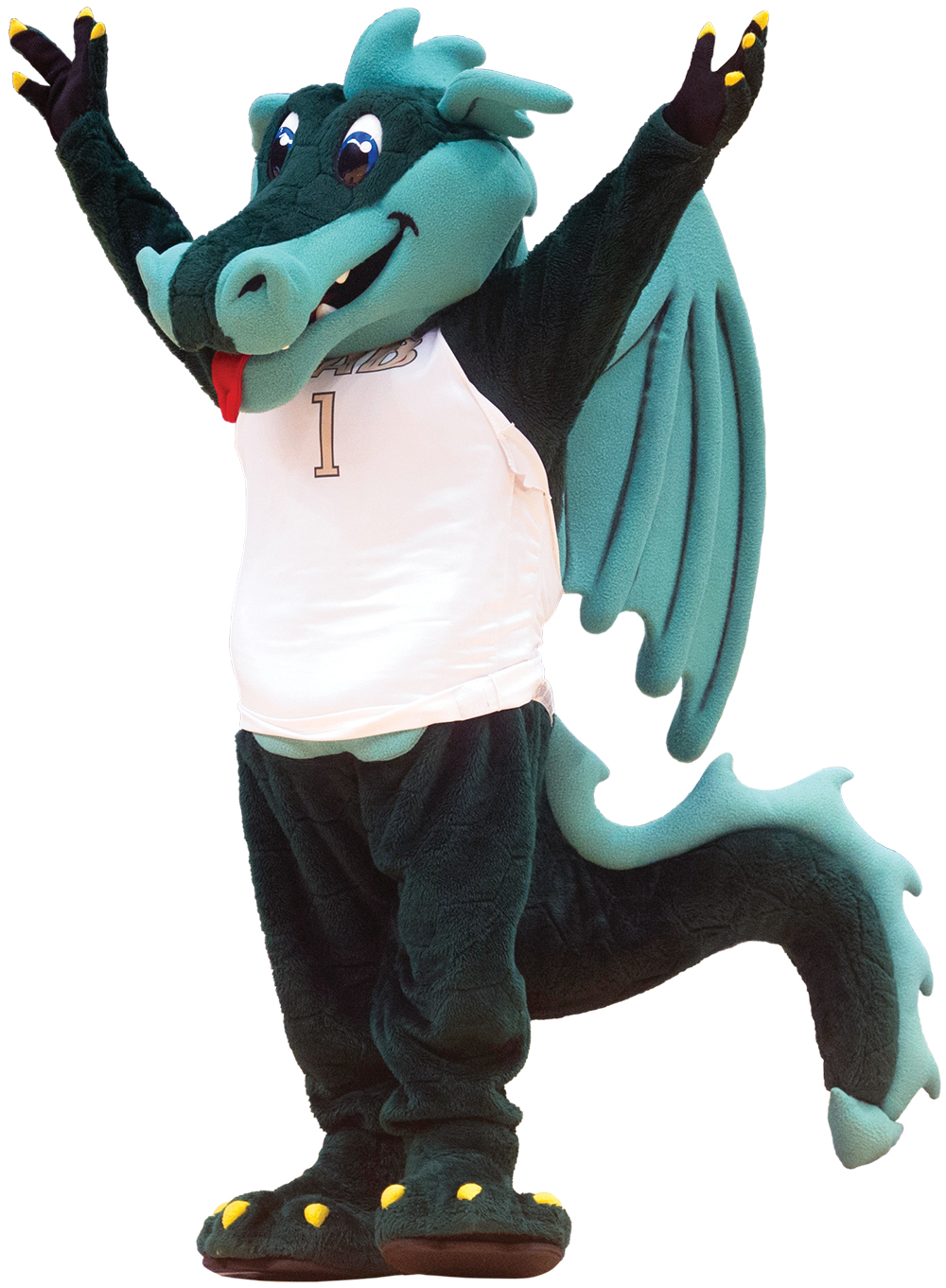 Blaze the Dragon
Blaze the Dragon
It’s not easy being green. It’s not easy walking on campus with wings and a tail either. But at the University of Alabama at Birmingham, Blaze the Dragon does just fine. UAB’s reptile of renown originated in 1995. But the name “Blaze” was predestined, from 1978, after the school’s sports teams were nicknamed by student vote. “They tried other mascots,” recalls Ryan Martin O’ Connor, coordinator of cheerleaders. “We considered a rooster, and Viking, but finally felt Blaze was best.”
She adds, “No mascot has a suit like ours. The wings are huge and if not careful, his tail can knock you down.” He has to be very careful in a crowd. And he is always in a crowd. Everybody wants to be around him. And Blaze rocks. “Most people think mascot performers are extraverts,” says Ryan, “but that’s not necessarily the case. Many are more comfortable in the suit than out of it when it comes to performing crazy antics.” For a bulky winged serpent, this leaping lizard can cut the rug. Blaze owns the dance floor. UAB sources confirm, when performing “Watch Me (Whip/Nae Nae,)” no dragon is better.
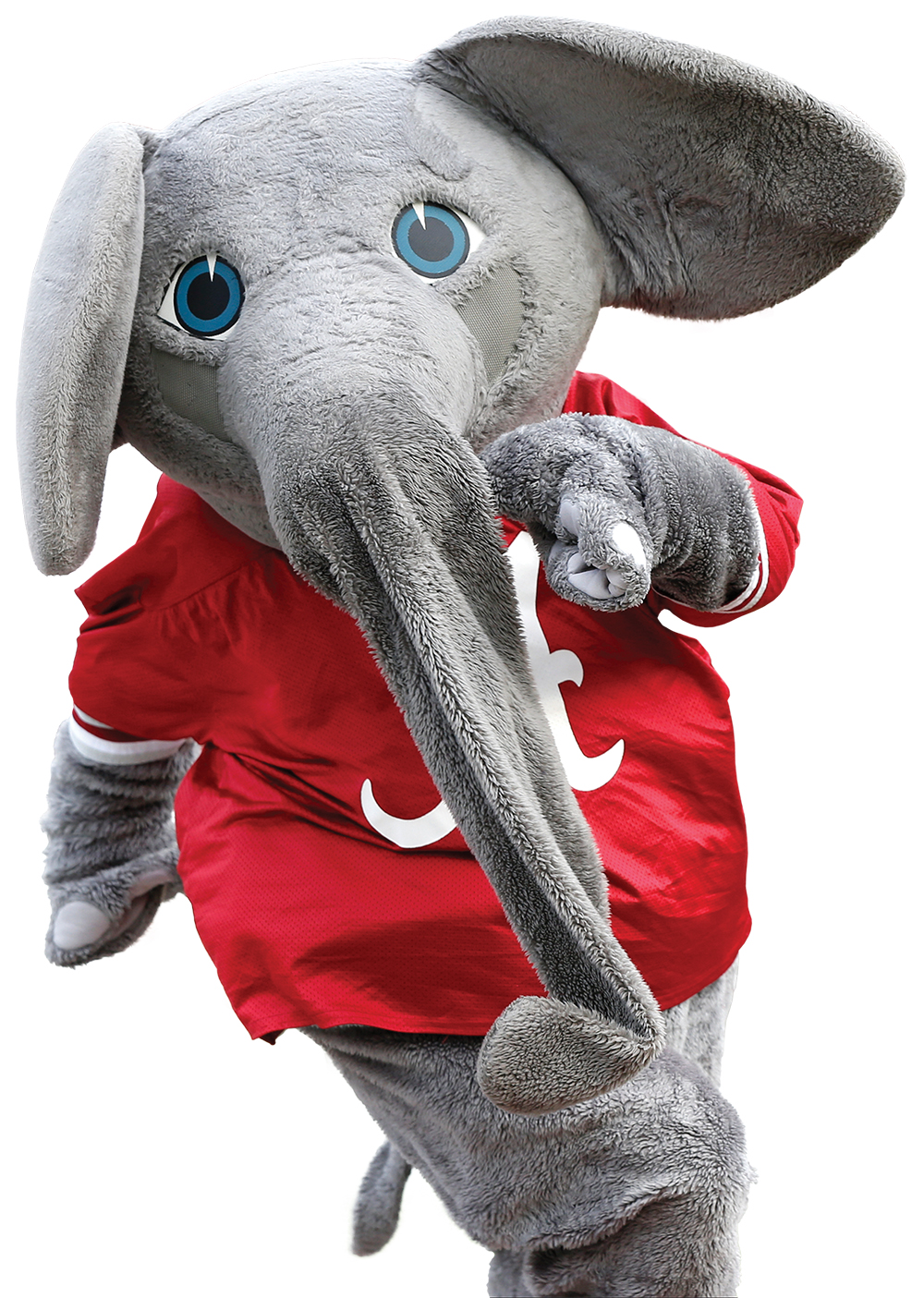 Big Al
Big Al
Named by University of Alabama student vote in 1979, Big Al the elephant is one of the most recognized sports mascots in America. His first public appearance was at the 1980 Sugar Bowl. Today he appears everywhere.
“When donning the elephant suit you become more than a mascot,” explains Big Al coordinator and former Alabama cheerleader Jennifer Thrasher. “You are an ambassador of the University. You must represent us in a positive way.”
Bama’s elephant is known for football games but sports are just part of the job description. He makes hundreds of public appearances annually and encounters situations from jubilant to sadness. “Big Al visits a lot of children’s hospitals,” Thrasher says. She related one such visit: a young child stricken with cancer too weak to offer little more than a feeble smile.
“Big Al sat at the little girl’s bedside, quietly holding her hand in silence,” Thrasher says. Later in private, the mascot removed the elephant head, revealing a college student with tears streaming down her face.
And then there is game day. “Every time you put on that massive head you are part of something bigger than you,” recalls Justin Sullivan of Nashville, mascot from 2011 to 2016. “I had no experience when selected as Big Al. I went from nothing to Bryant Denny Stadium, in front of 150,000 people. Even today it seems surreal.”
 SouthPaw and Miss Pawla
SouthPaw and Miss Pawla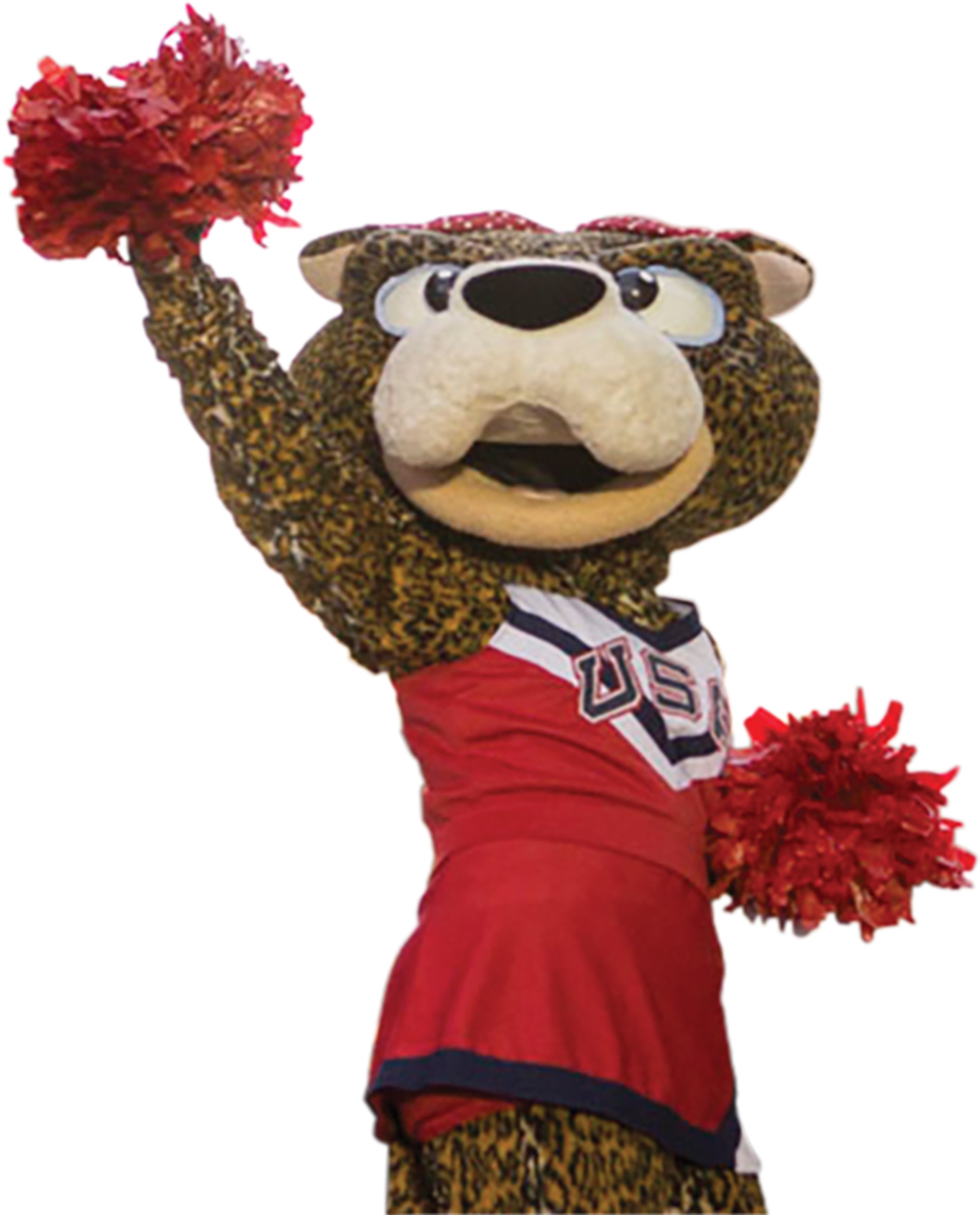
Love is in the air at the University of South Alabama, Mobile: SouthPaw and Miss Pawla are engaged, in a classic tale of jaguar romance.
OK, it’s probably the only tale of jaguar romance, but earlier this year, at a USA pep rally, SouthPaw proposed to fellow jaguar mascot, Miss Pawla. She nodded yes. The affirmative came as little surprise because Miss Pawla has flirted with SouthPaw since she has known him, just like she does with most males. It is who she is and part of why USA loves them both.
“South Paw is the strong silent type,” says USA Cheer Coach Bre Kucera. “He is athletic, 7 feet tall, and dresses in accordance with the sporting event represented.” Pawla is shorter and a prissy–flirty feminine feline. They are cool cats, and in South Alabama, “cool” is not easy.
“It takes heat endurance to be our mascot,” Kucera says. “A football game down here can be 100 degrees on the field.” Try being in that heat totally encapsulated in simulated jaguar fur.
Not a problem for SouthPaw and Miss Pawla, because love conquers. And the only heat these two are concerned with are the warm hearts they have for each other.
Cocky the Gamecock
For the last five years, Niki Martin has been Cocky the Fighting Gamecock of Jacksonville State University. Martin graduated in April, relinquishing her title as rooster with an attitude. But as all costumed performers say, even after you’re gone, the mascot lives on.
“Oh yes, I was a crying mess,” Martin laughs, about giving up her feathered friend. “But it has been so rewarding. To put a smile on someone’s face, even for five seconds, helps them and helps me.”
Cocky goes beyond mascot. This bird is hilarious. “He is always in trouble, always doing something he should not be doing,” adds head cheer coach Dave Almeita. “That’s why people love him.” But despite the rooster’s rants, no one cries fowl.
“He’s a prankster but not a jerk,” Martin says. “After pulling a joke on someone, I always offered a handshake or hug, to show it’s all in fun.” Martin is credited for developing Cocky’s signature strut and personality. “Cocky is the guy the girls love and the guys want to be like,” she says.
Few people know for the last five years Cocky was a woman. Even less know Cocky was Martin. When asked what is it like being famous yet anonymous inside a mascot suit, Martin says, “It’s like being Clark Kent and knowing you are Superman.”
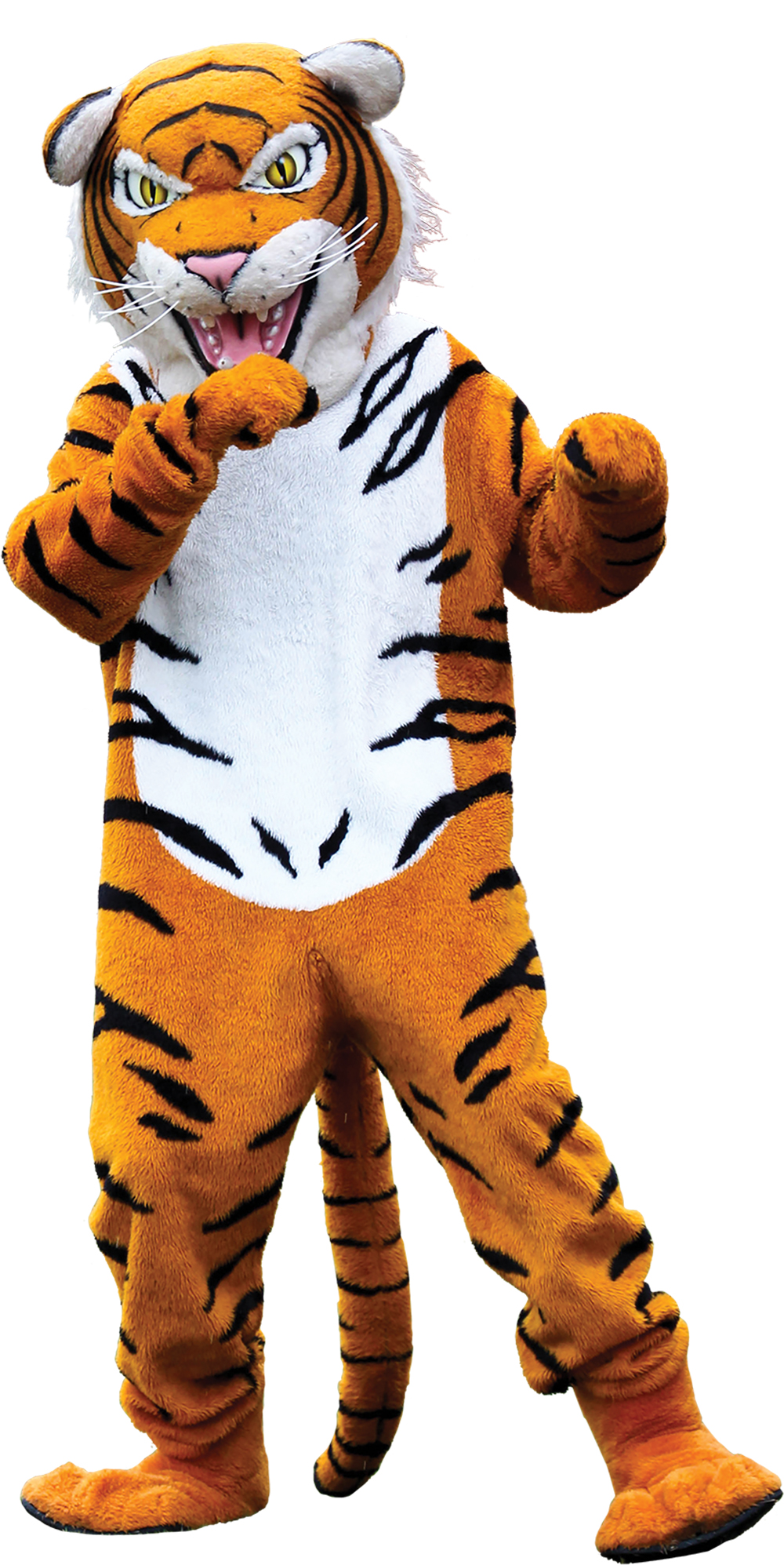 Tuskegee’s Golden Tiger
Tuskegee’s Golden Tiger
Herschel Freeman has a dilemma. He loves children but also portrays the feisty Golden Tiger for Tuskegee University. Kids and giant cats don’t often mix and Herschel is caught in the middle.
“It happens at almost every game,” the sophomore business major and mascot says. “I’ll be standing there in the costume and here comes a parent with a baby to thrust in my arms for a picture.” The child is terrified.
“Mascots can’t talk in uniform,” Freeman laughs. “But sometimes I want to shout to the dad, Oh, come on, man! I’m a 6-foot tiger standing on two legs! What do you expect this baby to do?”
Like all good mascots, Freeman excels at reading situations. “I always let young children approach me. I don’t walk up to them.” And though he cannot speak, “I nod and make gestures. With experience, you become good at it.” Also like all good mascots, actions speak louder than words.
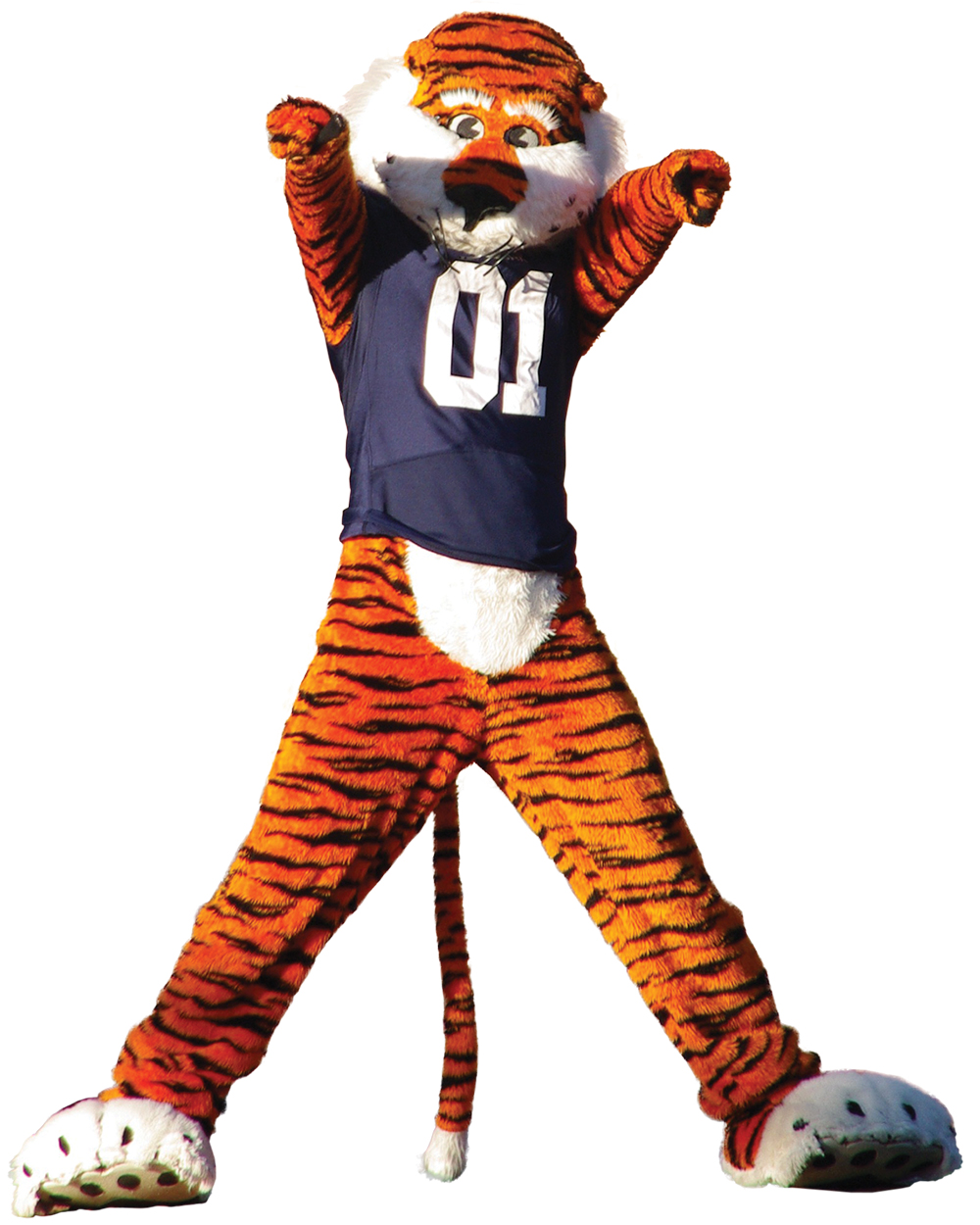
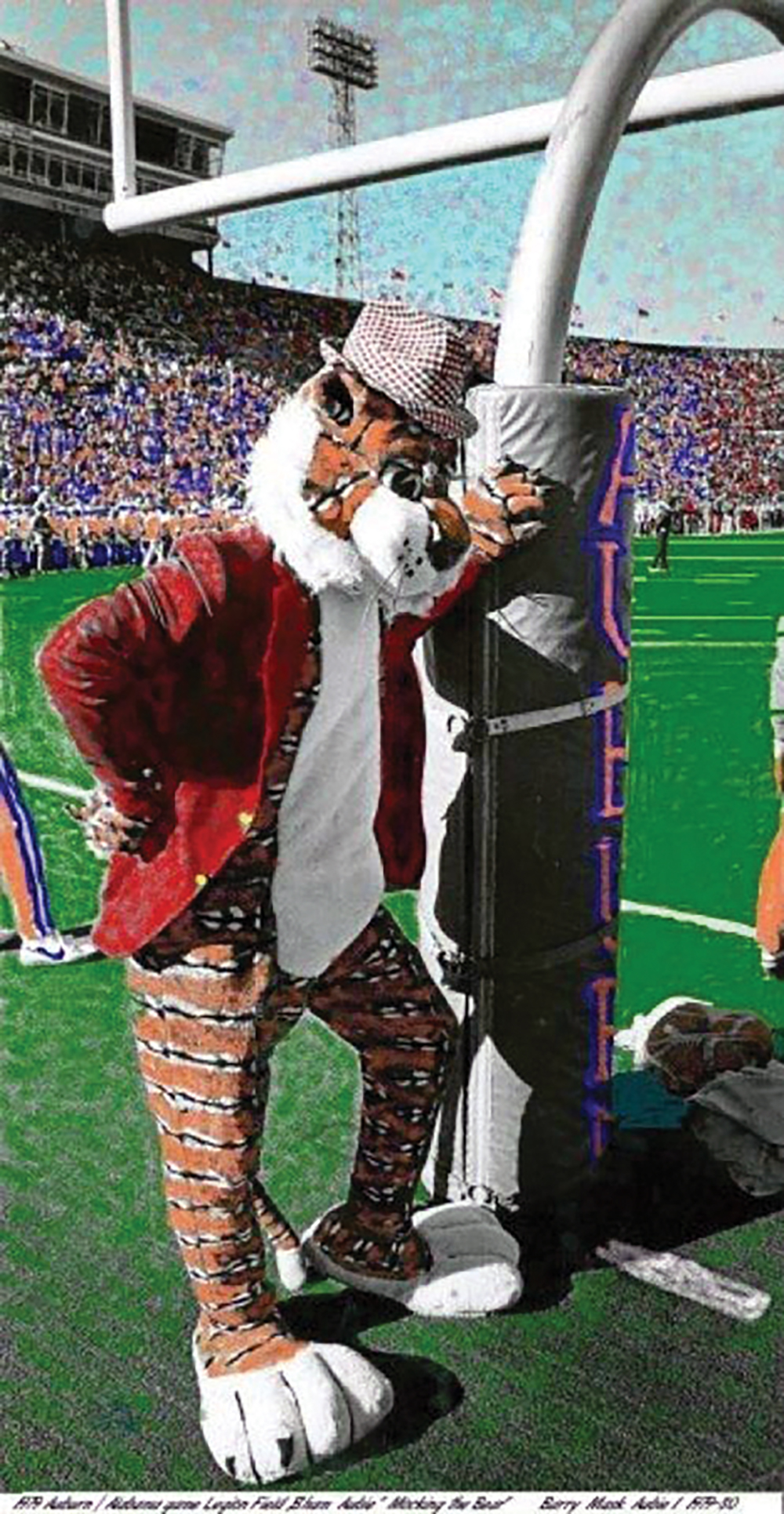 Aubie the Auburn Tiger
Aubie the Auburn Tiger
In 1979, Auburn University student Barry Mask was selected as the first Aubie the Tiger. “I wanted Aubie to be four things,” recalls Mask, who today is a Montgomery banker. “He had to be a good dancer, prankster, a ladies man, and love children.” Oh, how the tiger roared.
Today Aubie holds 9 UCA National Championships, more than any college mascot. He was the first inductee into the Mascot Hall of Fame, and is a state legend.
The 1979 Iron Bowl solidified Auburn’s mascot as a cat to reckon with because, of all people, Alabama football coach Paul “Bear” Bryant.
During the pre-game, Coach Bryant leaned against a goal post. Barry was Aubie. Wearing a crimson jacket and houndstooth hat, just like Alabama’s coach wore, Aubie sneaked up behind Bryant.
Curious as to why the crowd was cheering, the Bear turned to the Tiger, and did a double-take. Barry remembers, “In front of thousands, I was face to face, looking into squinting steel blue eyes of a legend glaring back at me.”
Seconds later, Coach Bryant’s stare transformed into a smile. Pointing at the tiger’s houndstooth headwear, he chuckled, “Nice hat, Aubie,” and walked away.
Aubie has been cutting edge ever since. Mask, who later served in the Alabama House of Representatives, occasionally meets current mascots, and offers advice: “If you are not pushing the limits, you are probably not a good Aubie.”
 T-Roy, Trojan of Troy
T-Roy, Trojan of Troy
All hail mighty T-Roy: Warrior of the Wiregrass, gladiator of goodwill, and Trojan of Troy – now new and improved.
“He has a new and improved head and facelift,” says Kyle George, Troy University’s associate athletic director for marketing and sales. T-Roy first appeared in the mid-1980s. The upgraded one was seen throughout Alabama this summer on a state tour, but his official debut is September 9 at Troy’s first home football game.
The big noggin now allows better visibility through the eyes and improved neck support for the mascot’s interior human. And not a moment too soon. Because when it comes to big man on campus, T-Roy rocks.
“One cool thing about mascots is they can go where a live person can’t,” adds Kyle. “They lift spirits and make people happy just by being around them.” The red-capped wonder frequently appears at children’s events, birthday parties, hospitals, alumni gatherings and almost anywhere his schedule allows.
But he walks a fine line between muscle-bound warrior and helmeted loveable softie. T-Roy is a powerful warrior through and through but a friendly one. He is stern yet fun. Toddlers are as comfortable with him as adults.
Typically, three to 5 students are helmet–ready at any given time. One wears the suit. The others attend the mascot. They are trained in the ways of Troy and Trojan spirit, ready to lead in battle or hug sweet babies.
See ya’ later, gladiator.






